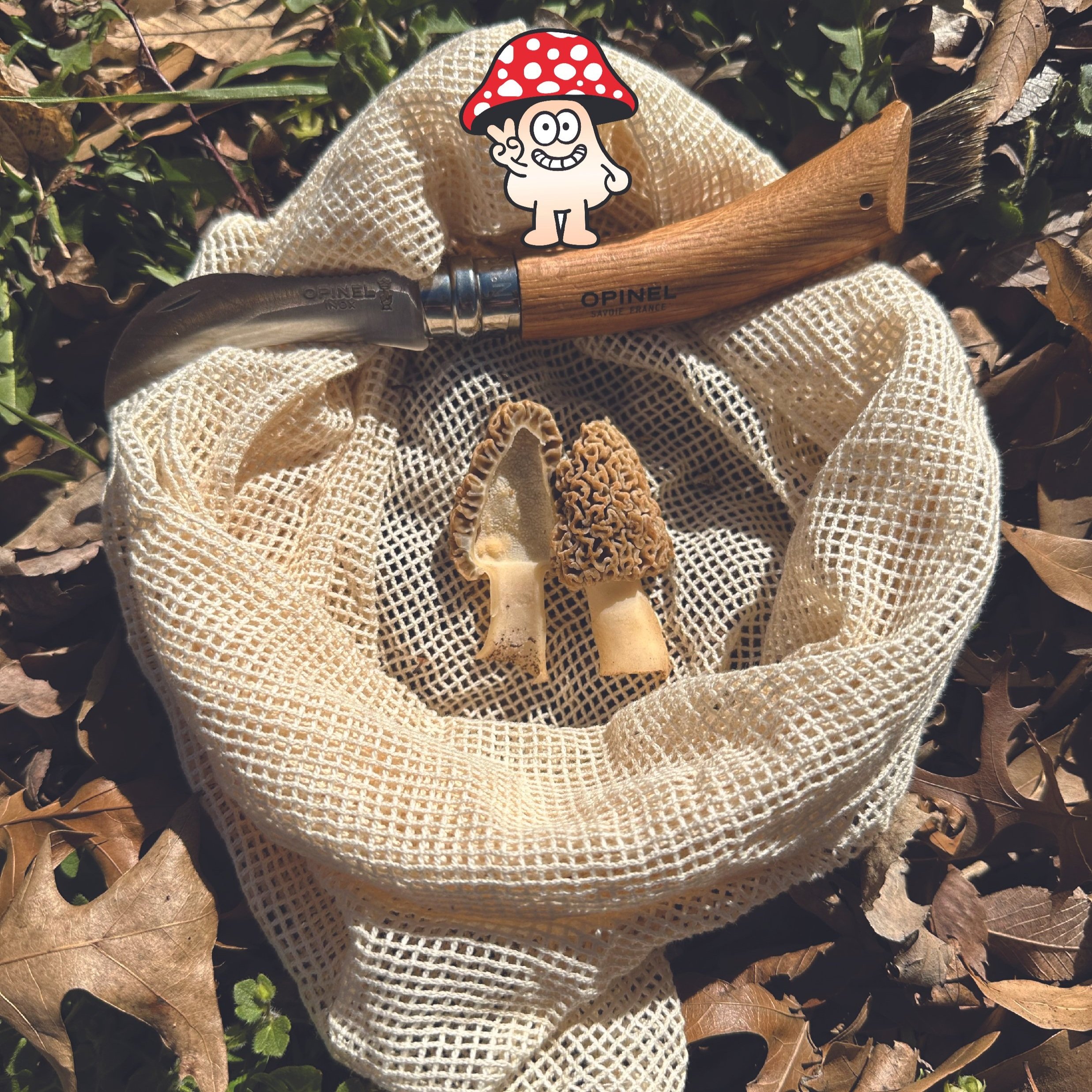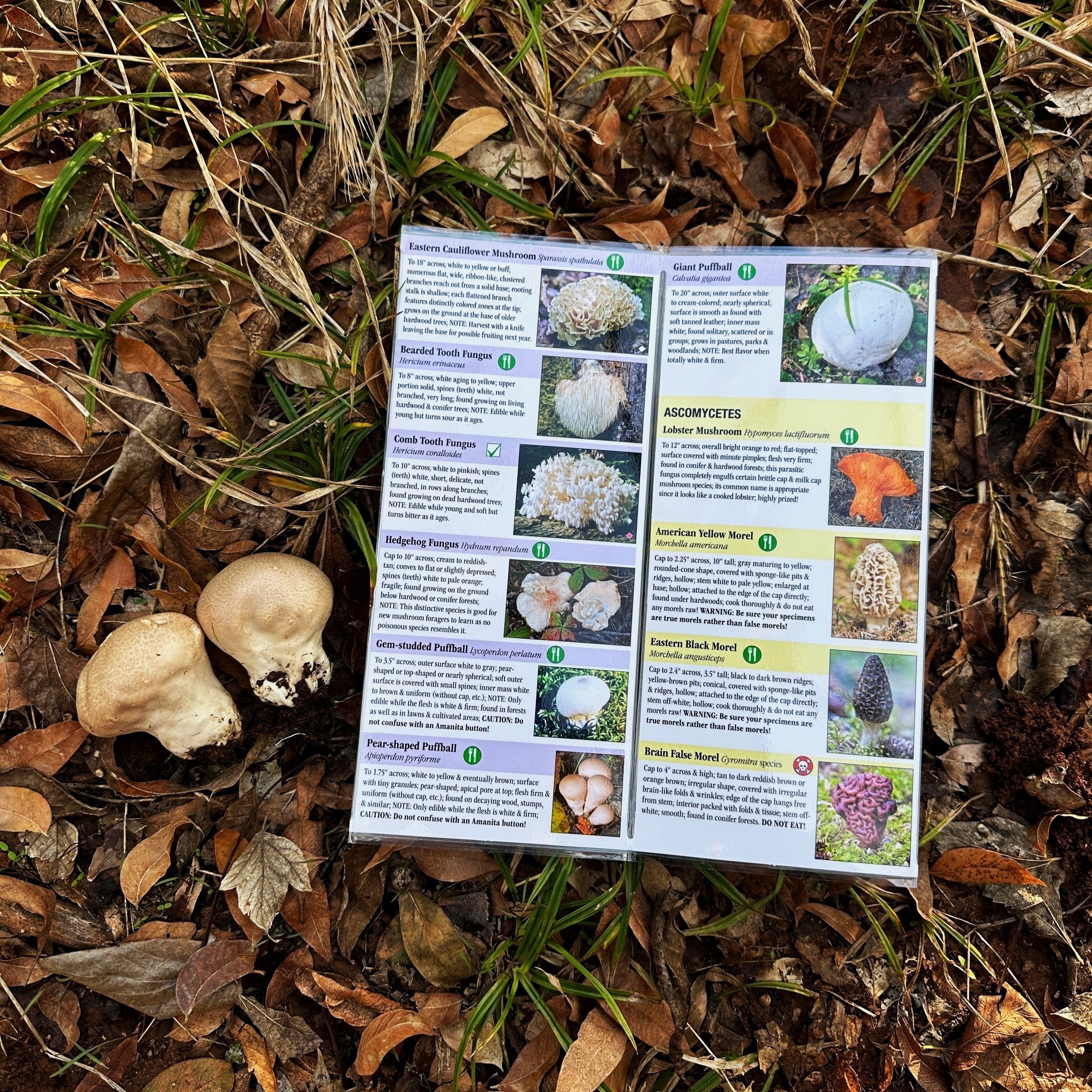Oklahoma Morel Mushroom Foraging Guide
Foraging morel mushrooms is a favorite springtime activity for my family and other outdoor enthusiasts in Oklahoma. These elusive fungi are highly prized for their unique flavor and culinary versatility. Whether you're a seasoned forager or just starting, this guide will walk you through the essentials of finding, identifying, and safely harvesting morels.
The Morchella Genus (Prized Edible Mushrooms)
In Oklahoma, the most commonly found morel mushrooms are:
Yellow Morels (Morchella americana): Approximately 90% of the yellow morels found in Oklahoma belong to this species. Known for their honeycomb-like caps, they are highly sought after by foragers and chefs alike.
Half-Free Morels (Morchella punctipes): These have a distinct attachment point between the cap and stem, making them easy to identify. They are less common but still edible.
Undescribed Morels: Around 5% of morels found in Oklahoma are considered undescribed species. These rare finds add an element of mystery to foraging but should be approached with caution and identified by experts before consumption.
The Yellow Morel (Morchella americana)
Half-Free Morels (Morchella punctipes)
Verpa Genus (Edible Mushrooms)
The Verpa genus includes mushrooms often confused with morels due to their similar appearance. While Verpa mushrooms are considered edible, they are generally not as delicious as true morels (Morchella species). However, Verpa mushrooms differ in structure and are generally considered less desirable for consumption.
Verpa bohemica (Wrinkled Thimble Cap): These mushrooms have a wrinkled, bell-shaped cap that hangs loosely over the stem. They are often found in early spring near riverbanks and floodplains.
Verpa conica (Bell Morel): Characterized by its smooth, bell-shaped cap, this species is also found in moist, forested areas during early spring.
Caution: Some Verpa species can cause gastrointestinal upset if not cooked thoroughly. Always proceed with caution when foraging these mushrooms.
Wrinkled Thimble Cap (Verpa bohemica)
The Bell Morel (Verpa conica)
Gyromitra Genus (Non-Edible Mushrooms)
Gyromitra mushrooms, commonly known as "false morels," are among the most dangerous look-alikes for morels. They have a brain-like cap and are often found in similar environments during the same season. The Gyromitra genus poses a complex case for foragers. In some regions of the United States, such as California, these mushrooms contain gyromitrin, a potentially deadly nerve poison. Symptoms of gyromitrin poisoning are often delayed 8-12 hours and can include paresthesia, gastrointestinal distress, liver toxicity, and even death. In other areas, such as Missouri, certain Gyromitra species are considered edible after proper preparation. In Oklahoma, the presence of gyromitrin in local Gyromitra species has not been researched thoroughly. Until more studies are conducted, it is safest to avoid consuming Gyromitra mushrooms found in Oklahoma entirely. Two common species found in Oklahoma are below:
Gyromitra caroliniana: A large, reddish-brown species often found in hardwood forests.
Gyromitra brunnea: This species is smaller, has a more muted color, and looks very similar.
False Morel (Gyromitra caroliniana)
False Morel (Gyromitra brunnea)
When to Hunt for Morel Mushrooms
The morel season in Oklahoma typically runs from early March to late April. The first morel mushroom sightings occurred on Feb. 26th, 2024, and March 6th, 2023. To increase your chances of success, look for these indicators:
Soil Temperature: Morels begin to fruit when soil temperatures reach ~55°F.
Weather: Warm days (60-70°F), cool nights, and rain is essential for morels
Nature’s Clues: “When the Redbuds are Blooming, The Morels Are Shrooming”
Essential Gear for Morel Foraging
Clothing and Footwear:
Long-sleeved shirts and pants are treated with permethrin to protect against ticks.
Waterproof boots for navigating muddy or uneven terrain.
Foraging Supplies:
Large mesh bags to carry your morel mushrooms while allowing spores to spread throughout the forest
A knife for harvesting the mushroom at the base (don’t pull it from the ground).
Safety Gear:
Fully charged phone or GPS device
First Aid Kit
Insect Repellant
Extras:
Field guide for identification
Snacks
Water
Morel Mushroom Secrecy
One of the unspoken rules of mushroom foraging is keeping the location of your finds a secret. This is particularly true for yellow morels, which are highly coveted. Foragers often guard their spots fiercely to avoid competition and ensure they have enough mushrooms for themselves and their families. It’s often said that mushroom foragers are the best secret keepers. If you’re lucky enough to discover a productive area, it’s best to keep the information to yourself and enjoy the harvest. Don’t be discouraged if a mushroom forager doesn’t want to share their foraging location or take you out with them. This reluctance is part of the culture of morel mushroom foraging and reflects the value placed on these special spots.
Potential Dangers While Foraging
Foraging can be rewarding, but it’s essential to be cautious:
Toxic Look-Alikes: If you aren’t 100% sure of the mushroom species, DO NOT EAT IT.
Tick-Borne Illnesses: Try your best to protect yourself from ticks carrying Rocky Mountain Spotted Fever or Lyme disease by spraying Permethrin on your clothes before foraging.
Environmental Hazards: Uneven terrain and poisonous plants like poison ivy can pose risks.
Venomous Snakes: Oklahoma is home to many different species of venomous snakes and it’s important to keep your distance or you could end up in the hospital.
Creating iNaturalist Observations
Using iNaturalist.org can greatly enhance your foraging experience:
Contribute to citizen science by submitting your observations while you’re out looking for mushrooms, no matter the species.
More observations of Morchella and Gyromitra species are needed to better document their distribution and characteristics within the state.
Tips for First-Time Foragers
Buy a local mushroom foraging guide to familiarize yourself with the different types of mushrooms you may come across while looking for morels.
Go foraging with an experienced morel hunter to help teach you how to find them.
Always respect nature by leaving some mushrooms behind to spread their spores.
Where To Forage Morel Mushrooms In Oklahoma
Over 95% of land in Oklahoma is private, which can make it challenging to find places to legally forage mushrooms. However, there are a few options:
Private Property: You must have explicit permission from the landowner to step on their property and search for mushrooms.
Chickasaw National Recreation Area: Located near Sulphur, Oklahoma, foraging is allowed with a strict limit of 5 gallons per person.
Ouachita National Forest: Spanning parts of southeastern Oklahoma, this forest permits foraging with a 5-gallon per person maximum.
It’s worth noting that a hunting permit from the Oklahoma Department of Wildlife Conservation does not allow for mushroom collecting. Foraging is also prohibited in state parks, conservation areas, and wildlife management areas. Always adhere to these rules to ensure sustainable practices and preserve these spaces for future generations.
Conclusion
Foraging for morel mushrooms in Oklahoma is a delightful way to connect with nature and enjoy the outdoors. By understanding the rules, preparing properly, and respecting the environment, you can have a safe and successful foraging trip. Whether you're drawn by the thrill of the hunt or the joy of savoring your finds, the experience is sure to be rewarding. Get outside, explore the woods, and start your foraging adventure today. Good luck and Happy hunting!









